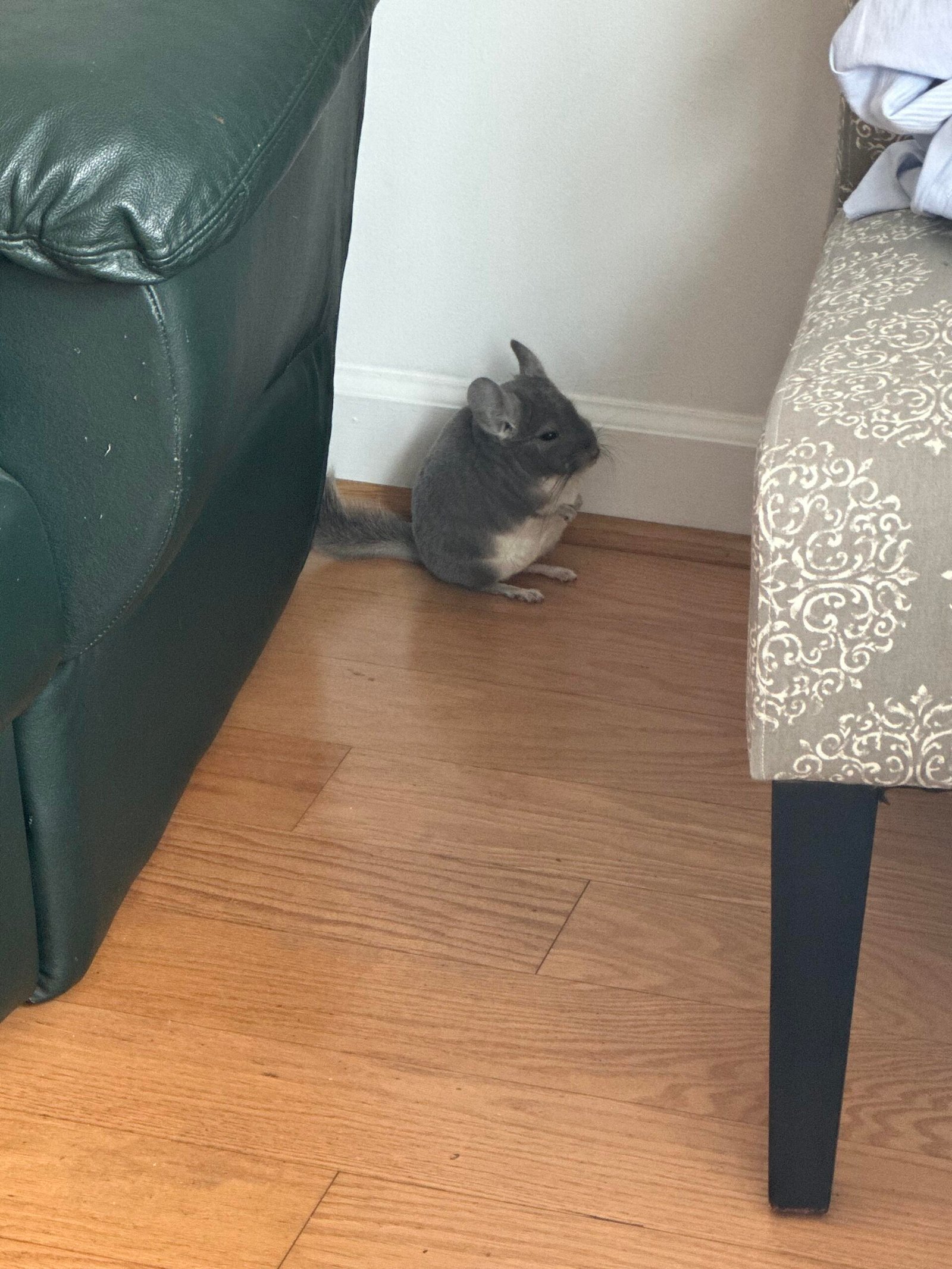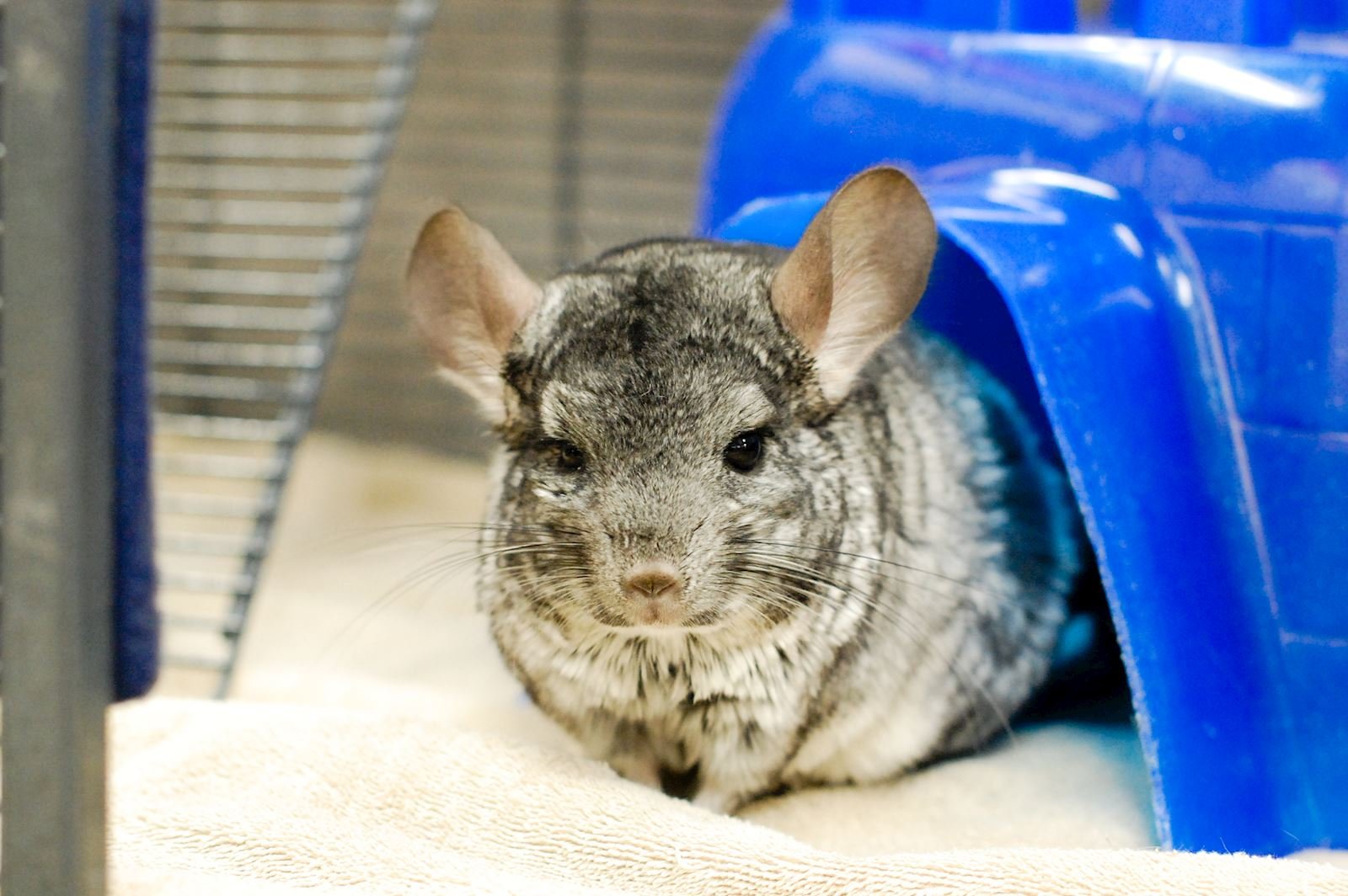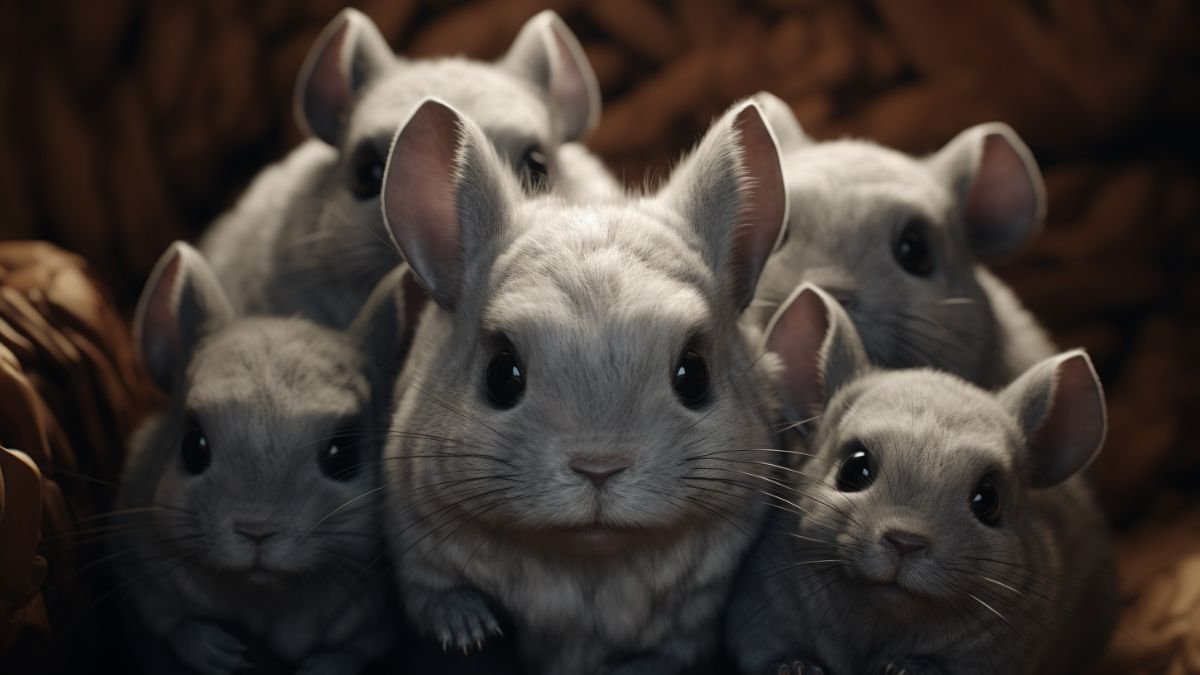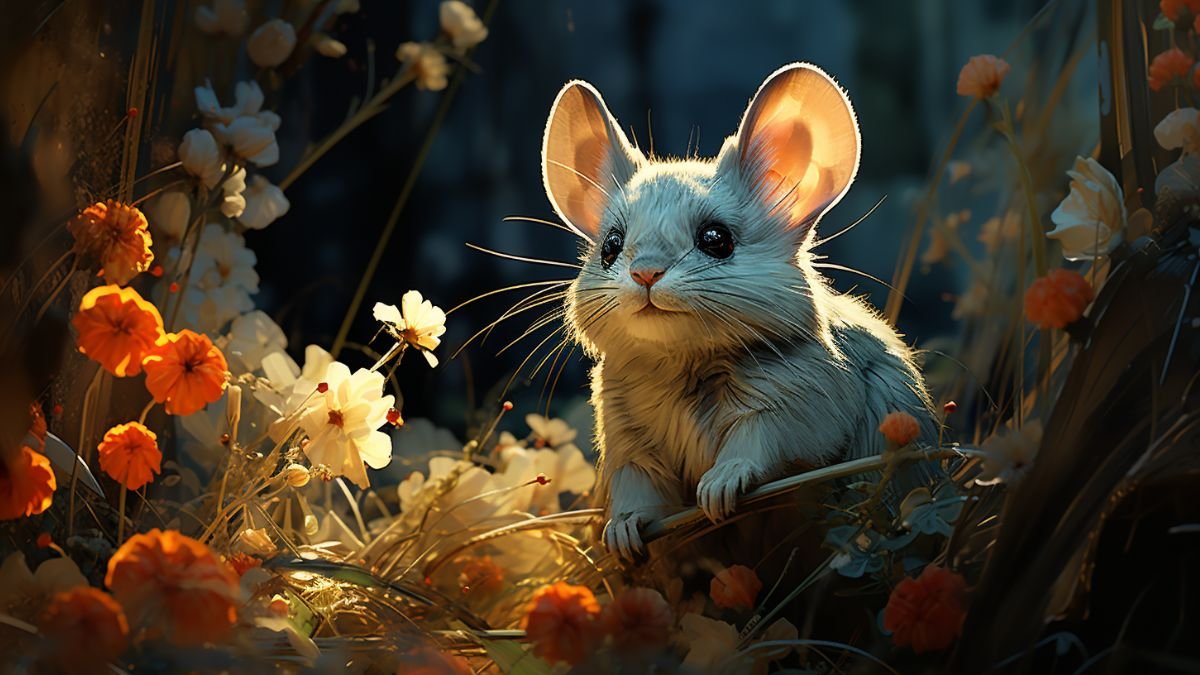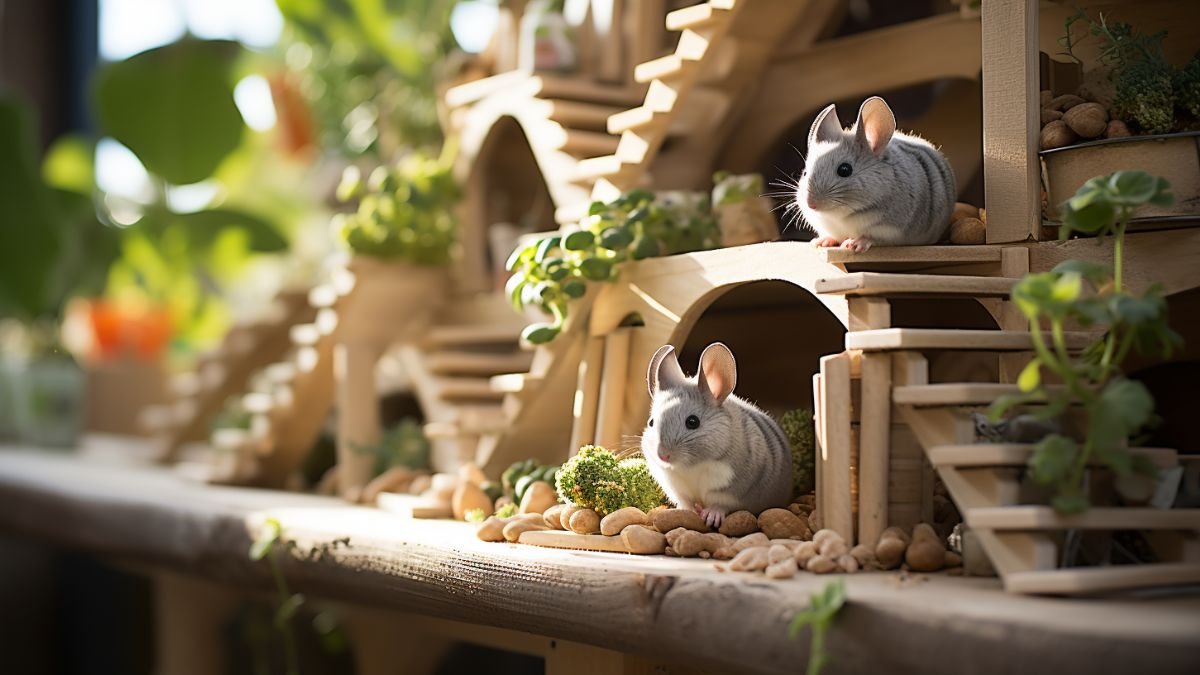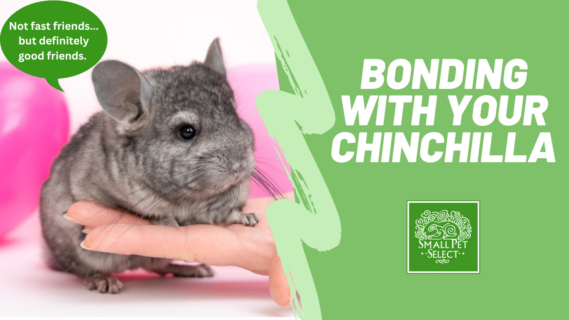
Is your chinchilla hiding in the corner, too shy to come out and play? You want to enjoy the fun and loving bond that comes with a social pet, but your furry friend just isn’t there yet.
Don’t worry—you can help your shy chinchilla open up and become more confident around you. You’ll discover simple, effective ways to build trust and encourage your chinchilla to be more social. Keep reading, and watch your quiet companion turn into a playful, loving friend right before your eyes.

Credit: www.amazon.com
Recognizing Shyness In Chinchillas
Recognizing shyness in chinchillas is key to helping them become more social. Each chinchilla shows shyness in different ways. Knowing the signs helps you respond with care and patience.
Chinchillas are naturally cautious animals. They take time to trust new people and environments. Watching their behavior closely reveals if they feel shy or scared. This understanding builds a strong bond over time.
Common Shy Behaviors
Shy chinchillas often hide in corners or behind objects. They stay very still and avoid eye contact. Some may freeze or move slowly when approached. They might also twitch their ears or flick their tails nervously.
These actions mean your chinchilla feels unsure or nervous. They prefer quiet and calm surroundings. Loud noises or sudden movements can increase their shyness. Patience and gentle care encourage them to come out.
Signs Of Stress And Fear
Stress shows in chinchillas through restless movements or excessive grooming. They might bite or squeak loudly when frightened. Rapid breathing or trembling also signals fear. Watch for these signs to avoid pushing your pet too fast.
Fear can make a chinchilla hide for hours or refuse food. It is important to give them space and time to relax. Creating a safe environment lowers stress and builds trust. This helps shy chinchillas feel secure and open up.
Creating A Comfortable Environment
Helping a shy chinchilla become social starts with creating a comfortable environment. This space must feel safe and calm. Chinchillas feel stress easily. A peaceful setting helps them relax and trust you. Small changes in their home can make a big difference.
Focus on making their cage and surroundings cozy. Keep noise low and avoid sudden movements. Pay attention to temperature and lighting. These details support your chinchilla’s well-being and encourage social behavior.
Safe And Quiet Space
Choose a quiet spot for the chinchilla’s cage. Away from loud sounds and busy areas. Loud noises scare them and cause stress. A calm place helps them feel safe and calm. Avoid high traffic rooms or near televisions. A quiet corner is best.
Proper Cage Setup
The cage should be roomy and secure. Provide soft bedding for comfort. Add hiding spots like tunnels or boxes. These give a safe retreat. Chinchillas need shelves to jump on. Keep food and water easily reachable. Clean the cage often to keep it fresh.
Temperature And Lighting
Chinchillas like cool temperatures between 60 and 70°F. Avoid heat and direct sunlight. High heat can make them sick. Use soft lighting, not bright or flashing lights. Natural light is good but indirect. Proper light and temperature keep chinchillas happy and calm.
Building Trust Gradually
Building trust with a shy chinchilla takes time and patience. Trust does not happen all at once. It grows slowly as your chinchilla learns you are safe and kind. This process needs gentle steps and steady care.
Every chinchilla is different. Some may take days, others weeks to feel comfortable. The key is to make your chinchilla feel safe and relaxed. Small actions help your pet see you as a friend.
Consistent Routine
Chinchillas feel safe with a steady routine. Feed and play with your chinchilla at the same time each day. Consistency helps your pet know what to expect. This reduces fear and builds comfort.
Keep your chinchilla’s environment calm. Avoid loud noises and sudden changes. A quiet space makes your pet feel secure. Stick to the same daily schedule for feeding, cleaning, and handling.
Gentle Handling Techniques
Touch your chinchilla softly and slowly. Sudden movements can scare a shy chinchilla. Let your pet come to you first. Offer your hand and wait for a sniff or approach.
Hold your chinchilla close to your body to make it feel safe. Support its legs and avoid squeezing. Talk in a calm, soft voice. These actions help your chinchilla trust your touch.
Using Treats For Positive Reinforcement
Treats are powerful tools to build trust. Offer small, healthy snacks during calm moments. Your chinchilla will link treats with positive experiences.
Give treats gently from your hand. This encourages your chinchilla to come closer. Use treats to reward brave or calm behavior. Over time, your pet will look forward to your presence.

Credit: smallpetselect.com
Encouraging Interaction
Encouraging interaction helps a shy chinchilla become more social and confident. It builds trust and reduces fear. Small, gentle steps make a big difference. Spending time and offering fun activities invite your chinchilla to engage more. This way, your pet feels safer and happier around you.
Engaging Playtime Ideas
Playtime brings joy and helps your chinchilla open up. Use soft, quiet toys that do not scare them. Hide treats inside toys to spark curiosity. Let your chinchilla explore at its own pace. Short, calm sessions work best. Watch how your pet reacts and adjust the play accordingly.
Introducing New Toys And Enrichment
New toys keep your chinchilla interested and active. Offer chew toys made from safe wood or hay. Puzzle feeders challenge their minds gently. Rotate toys often to keep things fresh. Enrichment makes your pet feel more comfortable and curious. It also reduces boredom and stress.
Socializing With Other Pets
Other pets can help a shy chinchilla become social. Choose calm animals that do not frighten your chinchilla. Introduce them slowly in a safe space. Always watch their first meetings closely. Positive encounters build confidence over time. Never force interaction. Let your chinchilla set the pace.
Monitoring Progress And Adjusting
Helping a shy chinchilla become more social takes time and patience. Watching how your pet changes helps you see what works best. It also shows when to try new approaches. Monitoring progress and adjusting your methods keeps the process smooth.
Tracking Behavioral Changes
Watch your chinchilla closely every day. Note any new actions or habits. Is your chinchilla exploring more? Does it accept gentle touches? Small signs show growing trust. Write down these changes to compare over time. This record helps spot slow or fast progress.
Adapting Strategies For Individual Needs
Each chinchilla is different. Some like soft voices, others prefer quiet time. Change your approach based on what your pet likes. Try different toys, treats, or playtimes. Adjust how often you interact. Being flexible helps your chinchilla feel safe and happy.

Credit: www.capecod.com
When To Seek Professional Help
Helping a shy chinchilla become more social takes time and patience. Sometimes, despite your best efforts, your chinchilla may still show signs of stress or fear. Knowing when to seek professional help is important for your pet’s health and happiness. Experts can provide advice and treatment that you might not find on your own.
Signs Of Persistent Anxiety
Watch for repeated signs of anxiety in your chinchilla. These include hiding for long periods and refusing to eat. Constant shaking or trembling also signals distress. If your chinchilla bites or scratches often, it might be scared. Lack of movement or over-grooming can show emotional problems too. Persistent anxiety means your pet needs more help than you can give.
Consulting A Veterinarian Or Behaviorist
A veterinarian can check for medical reasons behind your chinchilla’s behavior. Sometimes pain or illness causes shyness and fear. A behaviorist studies animal habits and offers training tips. They can suggest ways to reduce anxiety with special exercises or routines. Professionals help create a calm environment for your chinchilla to feel safe. Early advice can stop problems from becoming worse.
Frequently Asked Questions
How Long Does It Take For A Chinchilla To Become Social?
Socializing a shy chinchilla can take several weeks to months. Patience and consistent gentle interaction are key to building trust and confidence gradually.
What Are The Best Ways To Socialize A Shy Chinchilla?
Use slow, calm movements and offer treats to build trust. Spend daily quiet time near your chinchilla without forcing interaction to encourage comfort.
Can Handling Improve A Chinchilla’s Social Behavior?
Yes, gentle and regular handling helps chinchillas get used to human touch. Always support their body and avoid sudden movements to reduce stress.
Should I Use Treats To Help My Chinchilla Socialize?
Treats are effective positive reinforcement. Offering healthy snacks during interaction sessions encourages friendly behavior and strengthens your bond.
Conclusion
Helping a shy chinchilla become social takes time and patience. Spend quiet moments near your pet to build trust. Use gentle voice tones and soft hand movements. Offer treats to encourage positive interactions. Let your chinchilla explore at its own pace.
Small steps lead to big changes. Watch for signs of comfort and adjust accordingly. A calm and caring approach creates a happy, social chinchilla. Keep trying, and enjoy the growing bond every day.

